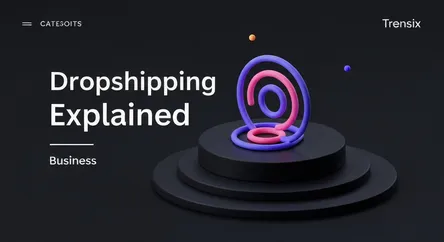Business
Dropshipping Explained

Discover dropshipping, the e-commerce model where you sell products without holding inventory. Learn why this low-risk startup idea is trending.
What is it?
Dropshipping is a retail fulfillment method where a store doesn't keep the products it sells in stock. Instead, when a store sells a product using the dropshipping model, it purchases the item from a third party—typically a wholesaler or manufacturer—and has it shipped directly to the customer. This means the merchant never sees or handles the product directly. The seller acts as a storefront and a middleman, focusing primarily on marketing and customer service while the supplier manages inventory and shipping.
Why is it trending?
The model's popularity has soared due to its low barrier to entry. Aspiring entrepreneurs can launch an e-commerce store with minimal initial investment, as there's no need to purchase inventory upfront. This significantly reduces financial risk. The rise of platforms like Shopify, coupled with easy access to suppliers through services like AliExpress, has made setting up a dropshipping business more accessible than ever. Its flexibility allows owners to run their business from anywhere with an internet connection, appealing to the digital nomad lifestyle.
How does it affect people?
For entrepreneurs, dropshipping offers a simplified path to starting an online business but presents challenges like lower profit margins, intense competition, and a lack of control over the supply chain and product quality. For consumers, it can provide access to a vast array of niche products at competitive prices. However, it can also lead to longer shipping times, potential issues with product quality consistency, and complex return processes, as the products are often shipped from overseas suppliers.